
ГОСУДАРСТВЕННОЕ УЧРЕЖДЕНИЕ ОБРАЗОВАНИЯ
«СРЕДНЯЯ ШКОЛА №3 Г. ЛЕПЕЛЯ»
WHAT DO GEESE WEAR IN THIS SEASON?
OZZIES’ CUSTOMS AND TRADITIONS
г. Лепель, улица Советская, дом 71
2020
CONTENTS
ABSTRACT……………………………………………………………………...….3
INTRODUCTION………………………………………………………………...…4
CHAPTER 1. THEORETICAL PART……………………………………………...5
1.1 About “ozzies”, “barbi” and “strine”…………………………………………....5
1.2 ANZAC Day……………………………………………………………………..5
1.3 The Melbourne Cup……………………………………………………………...7
1.4 Stalls with pies………………………………………………………………...…9
1.5 Geese fashion parade……………………………………………………….........9
1.6 The Pirates Day. ……………………………………………………………….10
1.7 The Chinchilla Melon Festival………………………………………………...12
CHAPTER 2. PRACTICAL PART………………………………………………..14
2.1 Research……………………………………………………………………….14
2.2 The analysis of the questionnaire……………………………………………....15
CONCLUSIONS…………………………………………………………………...16
REFERENCES……………………………………………………………………..17
APPENDIX A……………………………………………………………………..18
APPENDIX B……………………………………………………………………..19
APPENDIX C……………………………………………………………………...20
Abstract
The research work contains 20 pages, 12 pictures, 1 table, 15 references, 3 appendixes.
The key words: “ozzies”, “strine”, “barbi”, ANZAC Day, the Melbourne Cup, stalls, geese fashion parade, the Pirates Day, watermelon festival, a questionnaire.
The object of the research is customs and traditions of Australia.
The aim of this work is identifying the customs and traditions of Australians and making up comparative diagrams based on survey results.
During the research we used the search, descriptive, comparative, analytical and questionnaire methods.
The results of studying literature and Internet resources helped to identify the customs and traditions of Australians. The survey helped to make up comparative diagrams based on its results.
Introduction
About one third of the world's population speaks English. For some it is native, for others English became the second language after the mother tongue due to historic circumstances. Australia's life is full of traditions and customs. Some of them are very beautiful, colorful and picturesque and seem very reasonable; others are curious and sometimes funny. Many traditions appeared a long time ago, others appeared relatively recently.
The topic of the research is “What do Geese Wear in This Season? Ozzies’ Customs and Traditions”
The relevance of the study is justified by the widespread introduction of English in everyday life, the development of tourism and interest in travel.
The object of the research is customs and traditions of Australia.
The subject is the cultural heritage that holidays and customs contain.
As a hypothesis we assume if people know customs and traditions of a foreign country it will help them to adapt during the trip or when moving to a permanent place of residence, expand their horizons, increase interest in English.
The aim of this work is identifying the customs and traditions of Australians and making up comparative diagrams based on survey results.
According to the aim we can distinguish the following objectives:
To study literature and Internet resources on the subject of the research.
To give a general overview of Australian customs and traditions.
Determine the depth of knowledge of Belarusians about the traditions of Australia.
To summarize the obtained data.
Present the results in a chart.
To come to a certain conclusion.
During the research we used the search, descriptive, comparative, analytical and questionnaire methods.
The theoretical significance of this work is the following: special attention is paid to the cultural heritage of the English-speaking country, an idea of the traditions of the Australian people is given.
The practical importance is: the knowledge gained from this work can help to adapt in an unfamiliar country.
Chapter 1. Theoretical part
1.1 About “ozzies”, “barbi” and “strine”
If you are going to travel around the world it is important to know the language, customs, traditions of the country you are going to visit. It is impossible to come to Scotland and laugh at their national clothes -- kilts; or, for example, to be surprised that Queen Elizabeth II has porridge for breakfast-- this is an old custom for her. In order to avoid such situations, you should know the main customs of the country.
Australia comes from the Latin word “australis” which means southern [1]. 95% Australians speak English, moreover the vocabulary and grammar have elements of British and American expressions. They call themselves “ozzies” and their language “strine” – Australian. Australians have a habit to shorten the words and add “i” at the end of the word. For example the Australian word ‘barbi’ doesn’t mean a doll, it means ‘barbecue’[2]!
1.2 ANZAC Day
ANZAC day is a national holiday of Australia and New Zealand. Australians started to celebrate ANZAC day officially in 1916, New Zealanders in 1920. At first, it was the day of memory of the Australians and New Zealanders who died in World War I. After World War II, on April 25, Australia and New Zealand commemorate their citizens who died in all the wars and military conflicts [5]. On this day thousands of people come early in the morning, before the sunrise, to the graves of unknown soldiers throughout Australia to honor the memory of the victims and then greet the veterans [Picture 1] [6].

Picture 1 — Australians commemorate their citizens
Another tradition is military parades. Veterans of past wars and today's soldiers take part in them [Picture 2].
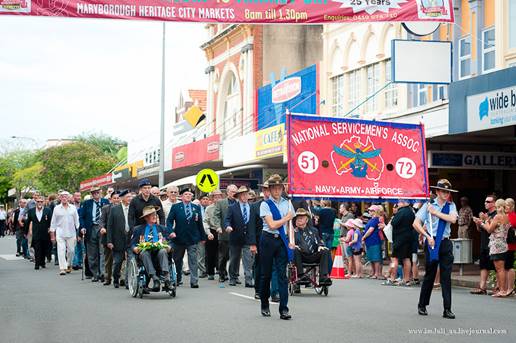
Picture 2 -- Military parade
The parade from each state capital is broadcast with commentary. There is an unchanged tradition of meeting veterans with schoolchildren, local officials, friends and colleagues. Former soldiers of the Australian army wear their military uniform and medals, people bring flowers and wreaths and leave them near the monuments. Australians honor all the soldiers who were killed in the war with a moment of silence. [8]
Concerts and performances are held on this day throughout the country. At the end of ANZAC day fireworks light up the night sky.
ANZAC day is very important for Australia and New Zealand. This sad and patriotic holiday brings together the hearts of the people of these two countries every year. [Picture 3], [15]
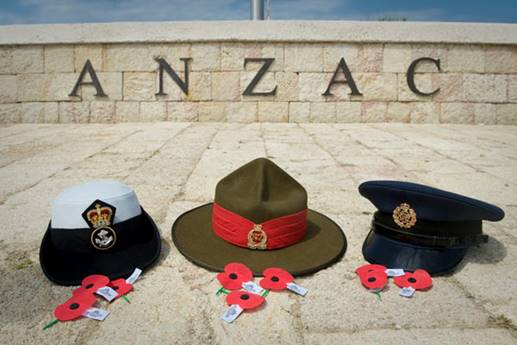
Picture 3— Elements of uniform in different periods of time
1.3 The Melbourne Cup
The most popular and surprising tradition among ‘ozzies’ is to play at the races. [Picture 4 ]
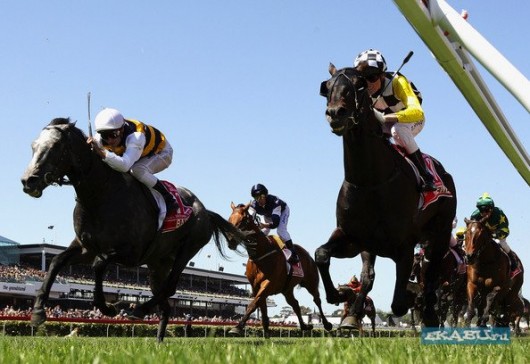
Picture 4—Moments of the races
The Melbourne Cup is Australia’s major horse race. The race has been held since 1861. Every first Tuesday in November the race stops the nation. Conducted in Melbourne, the event starts at 3pm. It is a 3,200 meter race for three-year-old horses and over. [14]
The residents of the state of Victoria are given a paid day off so they can take part in the races! When the races start everyone considers it his duty to make a bet on the races. Moreover on this day the results of hat competition are summed and the winners get prices for the most original hat [Picture 5], [7].
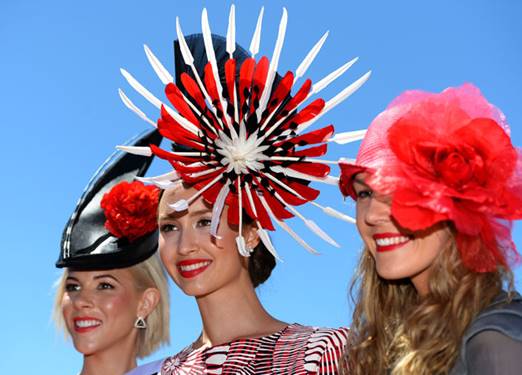
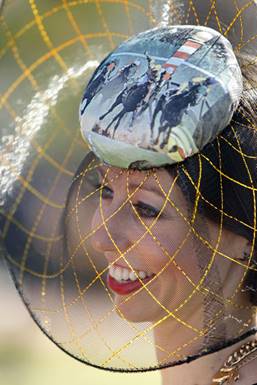

Picture 5— The most original hats
1.4 Stalls with pies
The custom of setting up stalls will never die in Australia. Australians do it if they need some money for a definite event. Small village communities are too proud to ask their neighbors for money. They set up stalls along the roads and sell home-cooked food. [3]
Each item for sale is thoroughly tested by the neighbors. Being caught trying to sell some liquid jam or unbaked pie is a public insult. [10]
1.5 Geese fashion parade
Everyone got used to slender models representing the public the latest fashion. Wales Brian Harrington, a Sydney farmer, was the first to talk about a bird fashion show. In his opinion quite attractive feathered models do not give in to long-legged beauties. [Picture 6], [12]
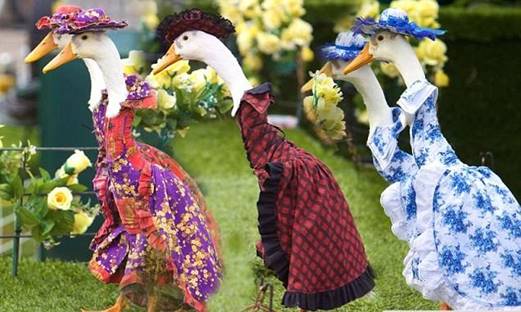
Picture 6— Long-legged beauties
For last thirty years Harrington’s models have been appearing at the Royal Easter Show. Moreover their outfits always correspond to the latest fashion trends.
The performance usually lasts about an hour. Traditionally the geese end their parade with the 'bridal' look. [Picture 7]
The elderly farmer knows all the names of his ducks and geese and sews charming costumes for them himself. Every year millions of tourists come to take part in a wonderful festival as well as enjoy geese fashion parade. By the way ducks and geese can not only walk in their beautiful outfits but also they take part in fun races. In tracksuits they gain such high speed that you can’t even take a picture. [9]
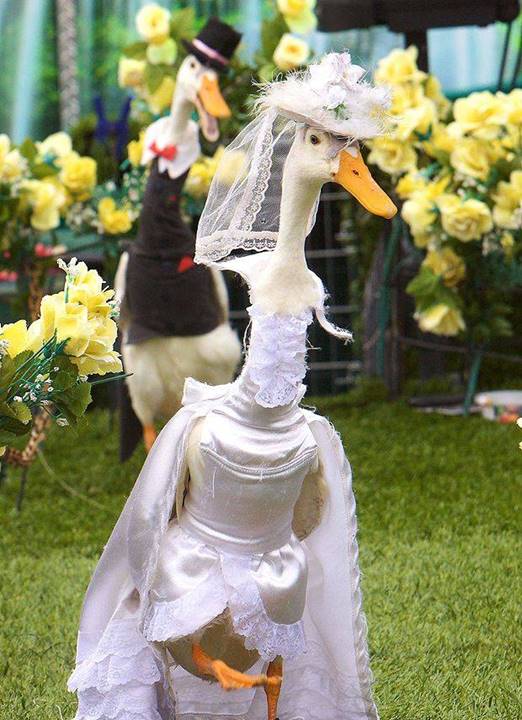
Picture 7— “The newlyweds”
1.6 The Pirates Day
Perhaps a lot of people would like to go back to the Middle Ages at least for a day and become bold and liberated pirates. Nowadays everyone has the opportunity to feel the charm, spirit and freedom of a pirate life. [Picture 8]
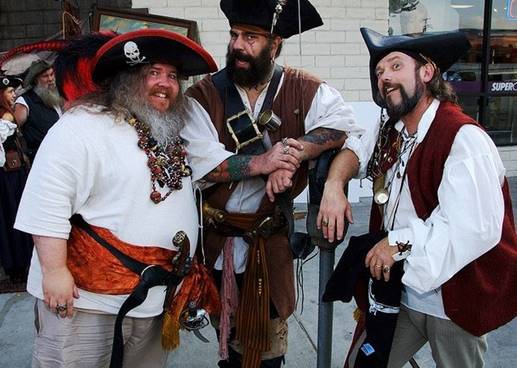
Picture 8— Pirates nowadays
On September 19 the Australians celebrate The Pirates Day. Required conditions are knowledge of slang language, typical pirate curses and some pirate stories that corsairs liked to tell during their sea voyages. [Picture 9], [11]

Picture 9— A pirate and his mates
On this day people discuss literature about the pirates, listen and sing pirates songs, dance and have fun. [Picture 10], [4]

Picture10— A brave corsair
1.7 The Chinchilla Melon Festival
The Chinchilla Melon Festival is a wild week of water melon-themed events. Visitors participate in many competitions taking place including melon skiing, the melon toss, pip spitting, melon bungee, and melon iron man races. [Picture 11]
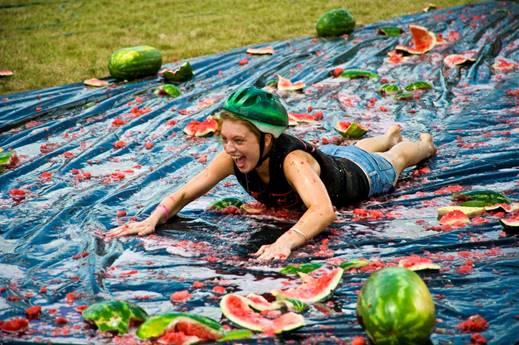
Picture 11— Watermelon riding
The Melon Festival began in 1994 with the aim of attracting visitors to the town . It is usually hold on the third Saturday in February.
Each festival attracts numbers of visitors, sponsorship and media exposure… many visitors see the weekend as a meeting place for family reunions, taking the opportunity to glimpse a rural lifestyle in a fun and exciting way. All accommodation is booked out months in advance, with some people booking two years ahead. About 20 tons of melons are used throughout the weekend every year, with about five tons ending up in the bellies of hungry revelers. [Picture 12], [13]

Picture 12— Ready, steady, go!
Chapter 2. Practical part
2.1 Research
We conducted a research among the students and the teachers of our school. We used the analytical method. The following questions were offered to answer . [Table 1]
Table 1—The questionnaire
|
Question |
Answer variants |
|
1. “Australis” means |
a) call to a battle of the native population; b) southern; c) a continent |
|
2. Who are “ozzies” |
a) Australian dwarfs; b) residents of Australia; c) Australian insects |
|
3. Goose fashion parade is a fashion show of… |
a) thin models; b) the models which have thin necks; c) geese and ducks |
|
4. The Pirates Day is… |
a) Australians dress up like pirates; b) Australians swear like pirates; c) both variants |
|
5. The melon festival is… |
a) watermelon breaking competitions; b) riding watermelons; c) throwing watermelons into a ring; d) watermelon weighing; e) all the variants |
|
6. ANZAC Day is… |
a) veterans’ memorial day; b) veterans’ parade; c) both variants |
|
7. The Melbourne Cup is… |
a) horse racing; b) tennis tournament; c) long distance running |
|
8. Family stalls are… |
a) stall with home-cooked food; b) type of housing; c) national dish |
|
9. “Barbi” is… |
a) an ancient idol ; b) a doll; b) shortened word “barbecue” |
|
10. Are you interested in learning Australian customs and traditions? |
a) yes; b) no |
2.2 The analysis of the questionnaire
We have analyzed the answers and got the following results:
Question 1. 70% of the respondents chose the answer “a continent”, 10% answered “call to battle of the native population” and 20 % answered correctly “southern”.
Question 2. 35% defined the word “ozzi” correctly (residents of Australia), the other 65% of respondents chose wrong variants.
Question 3. In our opinion a very interesting question was “What is a goose fashion show?” The majority of respondents (45%) gave the correct answer – a fashion show with the participation of geese and ducks as models. 30% decided it was a defile of thin models and 25% chose variant b – girls with long necks. [Appendix 1]
Question 4. 90% chose the right variant – Australians dress up and swear like pirates and, the other 10% preferred wrong answers.
Question 5. We asked if the respondents knew what a watermelon trash festival was. 15% chose variant c – throwing watermelons into the ring and d – watermelon weighing . Another 20% decided the correct variants were a – watermelon breaking competitions and b -- riding watermelons. And 30% of respondents gave the right answer – e (all the variants). [Appendix 2]
Question 6. ANZAC day is a national holiday of Australia. It is a parade of veterans and veterans’ memorial day. 40% of respondents chose this variant. The other 60% gave wrong answers. [Appendix 3]
Question 7. We asked what the Melbourne Cup was. The answers we got: horse racing – 35%, tennis tournament – 40% and long distance running – 25%.
Question 8. We wondered what Family stalls were. Only 15% of respondents gave the correct answer –stalls with home-cooked food.
Question 9. We asked what ‘barbi’ was. And the majority of respondents (70%) gave wrong answer.
Question 10. The main question was if you would be interested in learning Australian customs and traditions. And 97 % answered “Yes”.
Conclusions
In the course of our research we have tried to consider the customs and traditions of Australia as an English-speaking country. We studied literature and Internet resources, collected the material, conducted a survey, analyzed and summarized the information. It allowed us to make a certain picture about traditions of this southern country, determine the depth of knowledge of Belarusians about the traditions of Australia and to achieve the goal set at the beginning of this work -- to identify the customs and traditions of Australians.
In our opinion, the hypothesis -- if people know customs and traditions of a foreign country it will help them to adapt during the trip or when moving to a permanent place of residence, expand their horizons, increase interest in English – is confirmed .
The results of the questionnaire show that the majority of the respondents do not know the correct answers but almost all of them (97%) were interested in the topic we had chosen and they would like to know more about this amazing country.
As for the practical importance of the research its educational and explanatory function is worth noting. We tried to highlight popular customs and traditions of Australians and consider that this knowledge can help people to adapt in an unfamiliar country.
It was interesting to work on the project. We found out very interesting information about Australia. Next year we consider it possible to continue work on this topic. We can highlight the tricks Australians use to attract tourists.
In conclusion we would like to say that no matter how original and amazing the traditions and customs of the people of other countries are, we must tolerate and treat them delicately, approach them with genuine sincere interest and friendliness. People of other nationalities and cultures always appreciate this attitude.
References
1. Барановский, Л.С. Канада. Австралия. Новая Зеландия: Пособие по страноведению: Учеб. пособие / Л.С. Барановский, Д.Д. Козикис. – Мн.: Выш. шк., 2003. – 367 с. : ил.
2. Юхнель, Н.В. Английский язык: учеб. пособие для 11-кл. учреждений общ. сред. образования с рус. яз. обучения / Н.В. Юхнель [и др.]. – Мн.: Выш. шк., 2012. – 358 с. : ил.
3. http://australian-ht.ru/palatki_s_pirogami
4. http://www.calend.ru/holidays/0/0/2218/
5. http://www.calend.ru/holidays/0/0/279/
6. http://www.canberranovosti.com/2013/04/25/10301
7. http://eva.ru/beauty/read-15251.htm
8. http://greenbag.ru/australia/anzac-day
9. http://lady-uspech.ru/avstraliya/gusinyiy-parad-mod
10. http://mgalenobl.ru/index.php?p=avstraliya&st=Palatkigsgpirogami
11. http://orthodox.spb.ru/prazdniki/vsemirnyi-den/mezhdunarodnyi-den-podrazhaniya-piratam-19-sentyabrya.html
12. http://www.pressa.tv/prikolnoe/3787-prezentaciya-gusinoy-mody-v-avstraliyskom-sidnee-9-foto.html
13. http://top10s.ru/item/arbuznyi-festival-chinchila-melon
14. http://www.tuug.ru/kubok-melburna.html
15. http://unification.com.au/news/story/545/
Appendix A
Appendix B
Appendix C
Скачано с www.znanio.ruМатериалы на данной страницы взяты из открытых источников либо размещены пользователем в соответствии с договором-офертой сайта. Вы можете сообщить о нарушении.